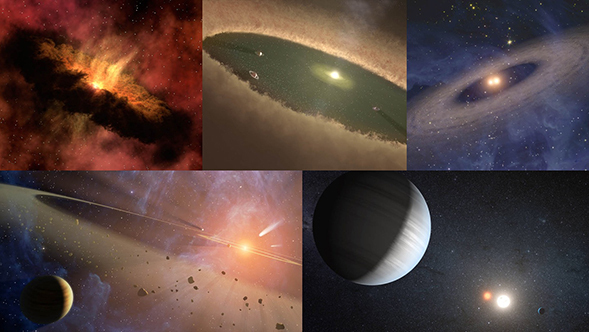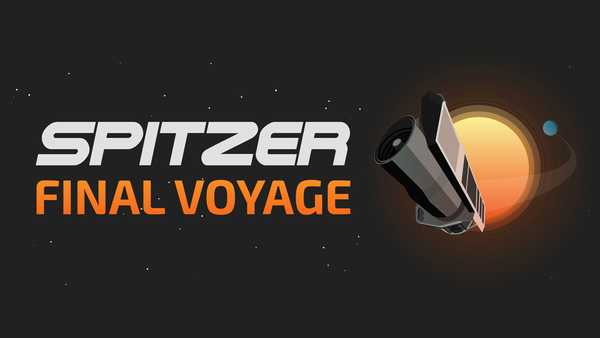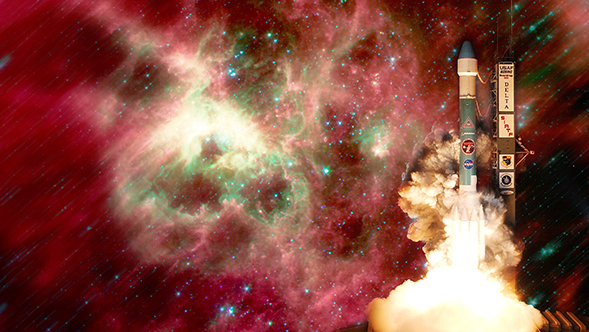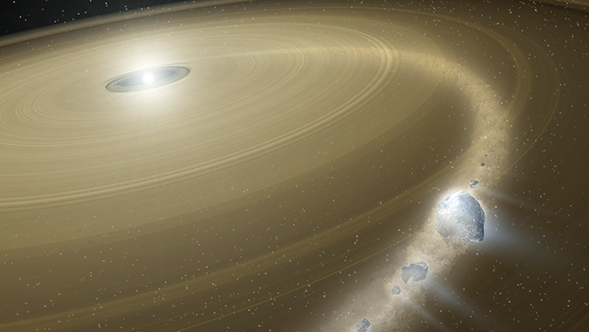
By Elise Furlan | June 12th, 2019
As Spitzer is on its "Final Voyage", training its infrared eye on the sky for the final nine months of its mission, I am a bit sad, but at the same time proud and upbeat that I have been connected to this mission for most of my career in astronomy. And besides my career, Spitzer also played a role in my personal life... So, one could say that, for the last two decades, Spitzer has been meshed into the fabric of my life.
It all started back in the early 2000s, when I was in graduate school at Cornell University, where Jim Houck, the Principal Investigator of one of Spitzer's instruments, the Infrared Spectrograph (IRS), was based. Members of the IRS instrument team had some guaranteed observing time on Spitzer, and I had the opportunity to work with some of them. The team was called "IRS Disks" and was led by Dan Watson and Bill Forrest at the University of Rochester. They were planning to study disks around young stars, which are the birthplaces of planets. The IRS is an ideal instrument to study them, since the dust in these disks emits strongly at infrared wavelengths, and from infrared spectra we can learn about the structure and composition of the disks.
It was through the "IRS Disks" team that I met my husband, Keven Uchida. He was a member of the IRS team at Cornell, and he was working with Dan and Bill to prepare the IRS observations. We went on several observing runs together before the launch of Spitzer. I was especially fascinated by the observatories on Maunakea, Hawaii; it is a very special place, made of barren, reddish volcanic rock at close to 14,000 feet, with wide views all around and the spectacle of thousands of stars and the shimmering band of the Milky Way overhead at night.
Another unforgettable experience was the launch of Spitzer in August 2003. Sitting at night on the beach in Cape Canaveral, seeing the rocket light up, rumble, and lift its payload skyward was truly amazing! And after a few months we were getting the first IRS data; we had to figure out how to best reduce and calibrate the spectra to get them ready for analysis. I was deeply involved in this process, even writing software to make it more efficient - after all, I wanted to graduate in a reasonable amount of time...
My PhD thesis consisted almost entirely of Spitzer results; I analyzed the IRS spectra of protoplanetary disks and protostellar envelopes in the Taurus star-forming region. My first job after graduating was a postdoc position at UCLA, where I continued working on "IRS Disks" data. Then I was selected as a Spitzer Postdoctoral Fellow, and I moved to JPL to continue my research there, now focusing on more evolved disks that are in the process of dissipating. I had two more postdoc positions after my Spitzer Fellowship, eventually becoming a research assistant at IPAC to work on the follow-up observation program for exoplanets found by the Kepler Space Telescope. Then, in the fall of 2016, my career came full circle: I was hired in a part-time position as one of the schedulers for the Spitzer Space Telescope. So, now I am one of three people who put together the weekly observing schedule; I will continue until the last sequence is sent to the spacecraft in January 2020.
It has been an incredible journey for me; I "grew up" as a scientist with Spitzer, and I met many wonderful people along the way, building a network of friends and trusted colleagues. I am sure Spitzer has enriched the lives of many others, and as we prepare to end its journey, we should celebrate its amazing achievements, look back proudly, and keep its legacy alive for many decades to come.

 Spitzer: More than a space telescope. It is part of my family and a piece of who I am.
Spitzer: More than a space telescope. It is part of my family and a piece of who I am.
 Long Live Spitzer!
Long Live Spitzer!



